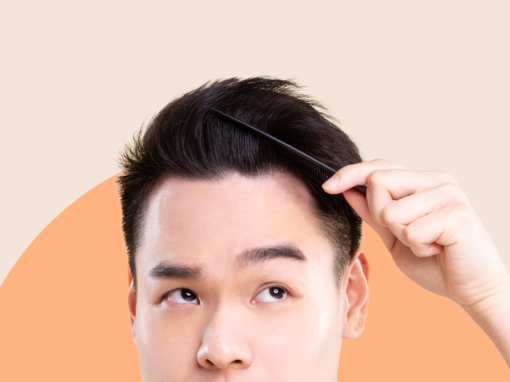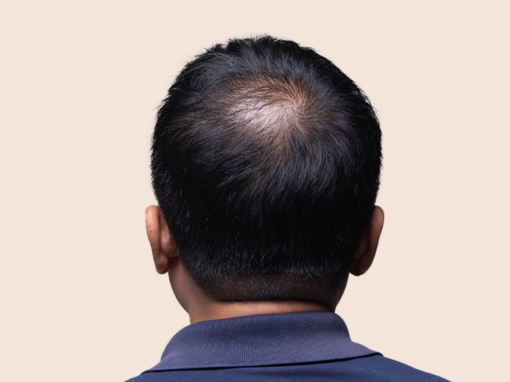Hair loss is a common yet distressing issue for men and women alike. It can cause a huge amount of distress and anxiety, as hair loss in men typically begins earlier, leading to baldness or thinning hair. But there are treatments available for hair loss in men that can help to slow down or reverse the signs. In this article, we’ll discuss 10 facts regarding hair loss in men, as well as some effective treatments such as thicker hair shampoo and hair regrowth for men.
Overview
When discussing hair fall in men, it is vital to understand the different types of hair and the underlying causes. Hair is composed of two main parts: the follicles and the shaft. The hair follicles are found beneath the skin and nourish the growing hair above them. The hair shaft is that part that is visible on the scalp and is composed of a protein called keratin. The hair follicles and shaft may be affected by a variety of issues, leading to hair fall in men.
Let’s discuss various facts about hair loss problems and their respective treatments.
10 facts about hair loss
- Male pattern baldness, also known as androgenetic alopecia, is the most frequently occurring type of hair loss in men. Hair loss usually starts from the temples and crown of the head, and then the hair becomes thinner as time passes.
- Genetic factors and testosterone levels cause male pattern baldness. The genes appear to be passed down from both the mother’s and father’s side of the family.
- In some cases, hair loss may be caused by medical conditions such as alopecia areata, an autoimmune disorder that causes patchy bald spots on the scalp; trichotillomania, an impulse control disorder; or certain medications.
- Stress and hormonal imbalances can also lead to hair loss in men, so addressing these issues is important if you experience them.
- Several treatments are available for hair loss in men, such as a thicker hair shampoo and topical creams containing minoxidil (Rogaine), designed to help regrow hair. Hair thinning treatments are also an option.
- Laser treatments can also stimulate the growth of new hairs in areas with thinning or balding for hair regrowth for men.
- Some surgical procedures, such as scalp reduction surgery or hair transplantation, can also treat male pattern baldness.
- Platelet-rich plasma (PRP) therapy may be an option for more advanced hair loss cases. This involves injecting the scalp with a concentrated serum derived from the patient’s blood to stimulate regrowth.
- In addition to these treatments, wearing a wig or hairpiece can effectively cover up balding for men who do not want to undergo more invasive treatments.
- Ringworm infection is a type of fungal infection on the scalp that can lead to scaling and hair loss for a limited period. It is contagious and spreads through direct contact with an infected individual. Although some infections may heal without treatment, others may require antifungal medication such as Griseofulvin.
Finally, it’s important to note that there is no “quick fix” for male pattern baldness – treatments may take several months before results become visible. Hence, patience and consistency are key here.
Conclusion
Hair loss in men is a distressing condition, but there are several treatments available that can help slow or reverse the signs of hair loss. These treatments include thicker hair shampoos, topical creams containing minoxidil, laser treatments, scalp reduction surgery, and PRP therapy. With patience and consistency, these treatments may be successful in helping to restore a man’s confidence in his appearance. Also, consult your healthcare professional for better guidance and results.
FAQs related to hair fall in men
How much hair fall is common in men?
Losing up to 50-100 strands of hair per day is normal. If the loss rate is more than this, it may indicate that you are experiencing excessive hair fall.
Can you stop male balding?
The effects of male balding can be slowed or reversed with various treatments, including thicker hair shampoos and topical creams containing minoxidil. Laser treatments, scalp reduction surgery, and PRP therapy are also options for treating advanced cases of hair loss.
Can we regrow hair by blocking DHT?
Yes, blocking DHT (dihydrotestosterone) is one way of regrowing hair. Topical creams containing minoxidil and certain medications can block DHT and stimulate new hair growth.
A DHT blocker shampoo can also be used, but it is less effective than topical treatments.
This article is for informational purposes only and does not constitute medical advice. The information contained herein is not a substitute for and should never be relied upon for professional medical advice. Book a consultation with andSons medical team to learn more about healthcare treatments here.


